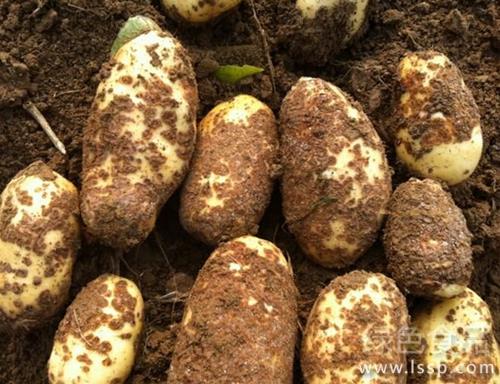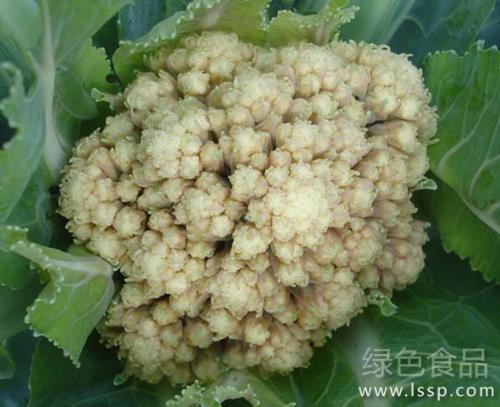The grotesque shape of Chinese Yam is not easy to sell the cause and Prevention of the deformity of Chinese Yam
In the growth of Chinese yam, due to the influence of environment, cultivation measures, management methods and other aspects, the internal organizational structure of some yam will be changed, which makes the yam become strange.

Chinese yam deformity
1. Germplasm factors: yam beak and yam seed block are widely used in large area cultivation. Chinese yam mouth and yam cuttings have been cultivated in the soil for at least one year, which is easy to carry root-knot nematode, anthracnose, brown rot and so on. After the cultivation of yam seed blocks with bacteria, if the conditions are suitable (high temperature and rainy from June to July), the disease will occur in a large area, resulting in abnormal growth of yam. In addition, the mouth of 1-year-old and 2-year-old yam is more expensive, and some people who are greedy for petty gain have cultivated 4-5-year-old yam mouth. Because the yam mouth is aging, it is easy to mutate, forming bifurcated, curved and other abnormal yam. Precautions. 1. Soak the mouth of Chinese yam or cut yam with mancozeb 500 × 800 times or carbendazim for 3-5 minutes to kill the bacteria. 2. The one-year-old yam mouth cultivated with high quality yam beans was used as seed. 3. Using the Chinese yam mouth or cut pieces of crude 20~25cm as seed, it is beneficial to form a stout stem vine and enhance the disease resistance of Chinese yam.
Second, soil quality factors: 1. Soil quality directly affects the healthy growth of yam tubers. Black clay yam, tuber snake-shaped, foot-shaped, tuber hairy root thick, hairy; sandy soil yam, tuber slender, not thick enough. 2. The groundwater level of the soil is shallow, the growth of Chinese yam is not exuberant, and the roots and tubers are easy to rot. 3. There are many diseases and insect pests in continuous cropping plots, and under the influence of hormone secreted by roots, the color of tuber bark becomes darker and the quality becomes worse. Preventive measures: 1. Cultivated with uncultivated Chinese yam, it can be cultivated continuously for 3 years, ditching on the ridge back of the first year Chinese yam in the second year, and planting in the first year in the third year. 2. Select sandy loam or loam with high dryness, good drainage and deep soil layer, which requires the same quality of the upper and lower soil.
Third, planting factors: 1. The depth of trenching is not enough. The yam ditch is too shallow, and the basal meristem of the yam tuber elongates to the bottom of the ditch and grows laterally, forming a foot or serpentine shape. 2. The soil quality in the ditch is uneven. During the growth of yam tuber, it is easy to bend and deform after meeting bricks, stones and hard soil. 3. The mouth of Chinese yam is not placed properly. The mouth of Chinese yam is placed improperly, resulting in 2-3 stems. If it is not handled in time, it is easy to form multiple tubers and affect the quality of Chinese yam. Preventive measures: 1. Digging ditches should be deep enough, and the depth depends on the variety of yam. Most yam tubers are 1-1.3 meters long, and trenches should be more than 1.3 meters. 2. Before planting Chinese yam, mixed organic fertilizer was applied, and the soil layer of 20~30cm in yam ditch was rotated for three times to make the soil fertilizer mix evenly. 3. When the cut pieces and mouths of Chinese yam are placed, the robust buds have an oblique angle of 45 degrees with the ground, which maintains the top advantage of the robust buds and inhibits the growth of other buds. At the same time, the robust buds should be placed on the side to facilitate the growth of the aboveground stems and the elongation of underground tubers.
Fourth, management factors: 1. Too much Rain Water, or improper watering, resulting in ditch collapse, affecting the growth of yam tuber, bending. 2. Grubs, mole crickets and other pests bite yam tubers, resulting in insect eyes or bifurcations. 3. Root-knot nematode, anthrax and stem rot harm the leaves and tubers of Chinese yam. Preventive measures: 1. Watering should be timely and appropriate, timely drainage in the rainy season to prevent ditch collapse. 2. Organic fertilizer should be fully mature and mixed with a small amount of trichlorfon to kill germs and pests. 3. Before planting Chinese yam, soak the seeds with carbendazim 500-800 times solution, and sprinkle the fine sand or bran mixed with trichlorfon in the planting ditch. 4. From the first ten days of June, 500-fold solution of methyl topiramate and mancozeb was sprayed every 15 days to prevent and kill bacteria.
- Prev

Long scab on the epidermis affects the sales phase how to prevent and cure potato scab
Long scab on the epidermis affects the sales phase how to prevent and cure potato scab
- Next

Control of common diseases of cauliflower in early flowering and non-heading autumn
Control of common diseases of cauliflower in early flowering and non-heading autumn
Related
- Fuxing push coffee new agricultural production and marketing class: lack of small-scale processing plants
- Jujube rice field leisure farm deep ploughing Yilan for five years to create a space for organic food and play
- Nongyu Farm-A trial of organic papaya for brave women with advanced technology
- Four points for attention in the prevention and control of diseases and insect pests of edible fungi
- How to add nutrient solution to Edible Fungi
- Is there any good way to control edible fungus mites?
- Open Inoculation Technology of Edible Fungi
- Is there any clever way to use fertilizer for edible fungus in winter?
- What agents are used to kill the pathogens of edible fungi in the mushroom shed?
- Rapid drying of Edible Fungi

